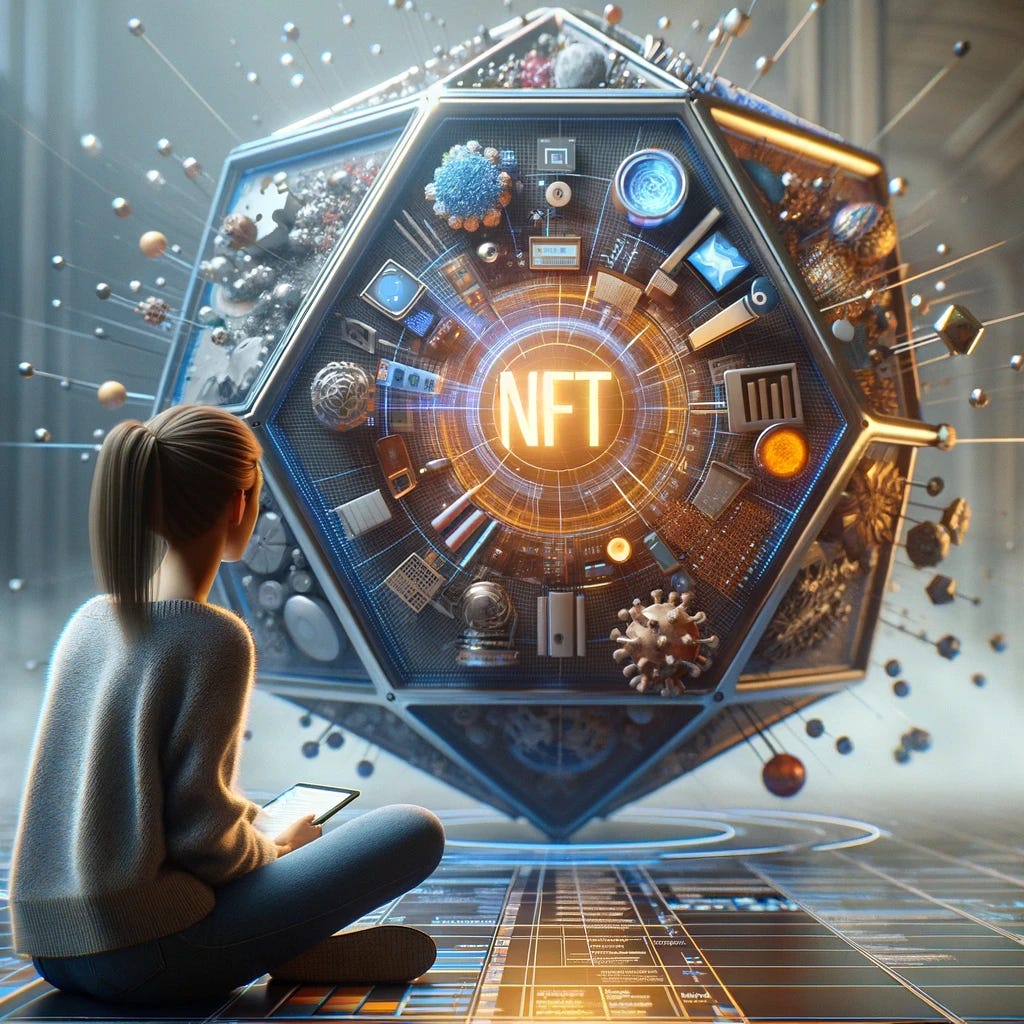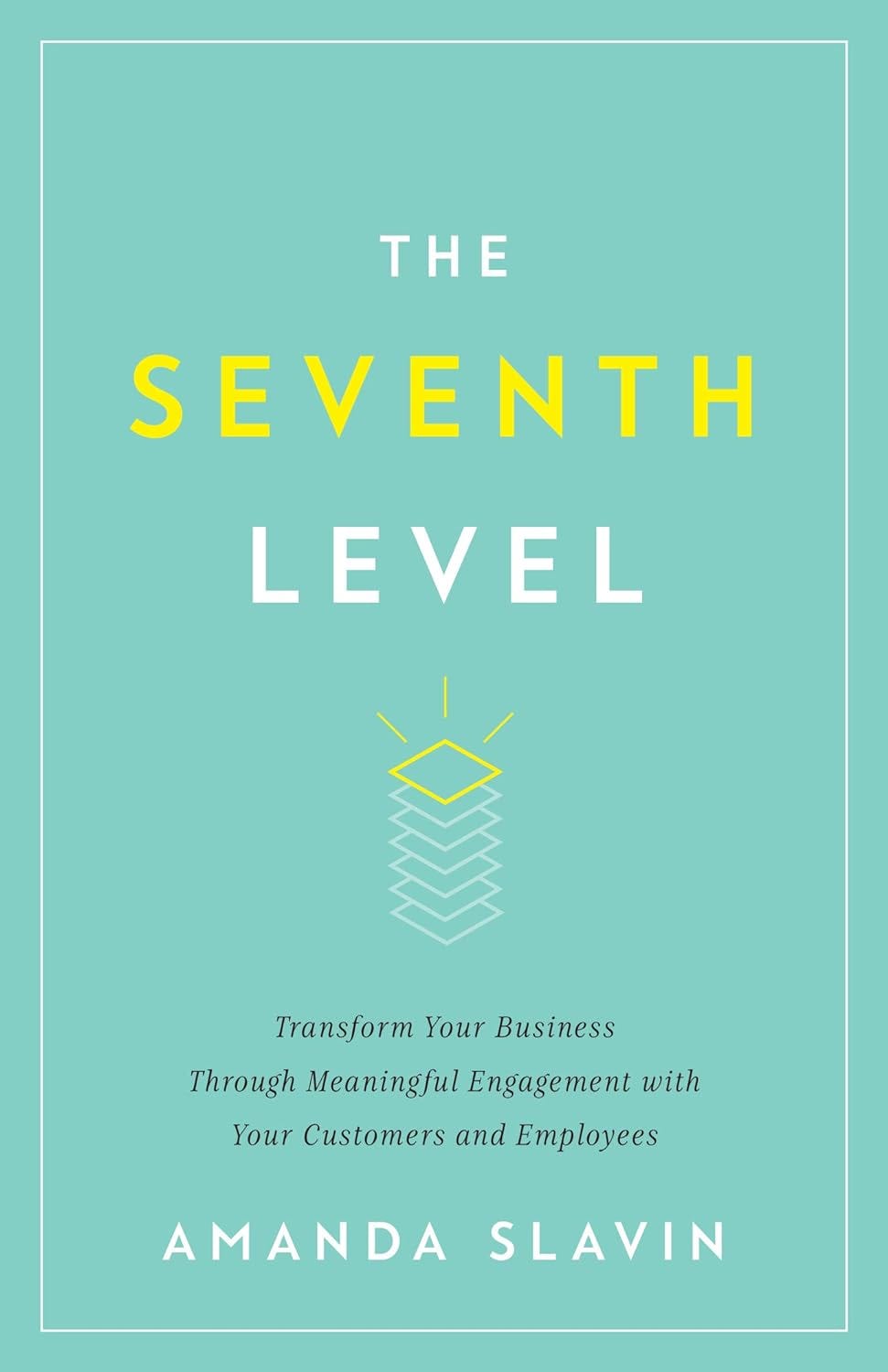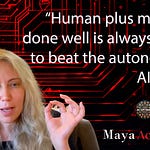Imagine a classroom where your brainwaves sync with AI, and your achievements are as unique as NFTs.
Sounds like sci-fi. It’s happening now, and we’re diving headfirst into this educational universe.
Let’s unravel how AI and NFTs are not buzzwords but revolutionize learning, making it more personal than your Netflix recommendations.
Listen on Apple || Spotify || YouTube
00:00.00 Groundbreaking education
00:00:42 Season 2 begins with Organic AI Dynamic NFT
00:02:27 Organic AI Dev - There is no CEO in the rainforest.
00:04:33 How Students Use the NFT and Frequency Bot
00:06:06 How Teachers Use Learning Frequency
00:07:49 Smart contracts for learning
00:11:25 New Success Models - beyond the college focus
00:13:02 Power Skills - Empathy, Compassion, Critical thinking
00:15:43 The Changing Face of Jobs and Helping Teachers be more than Service Providers
00:18:56 Learning Frequency moving forward
Buckle up because we’re about to explore how these simple tools turn the traditional classroom on its head!
Think of this as your all-access pass to the education of the future. Forget about one-size-fits-all lessons; we’re talking about tailor-made learning experiences that adapt to you, not the other way around.
Amanda Slavin is working on a project using NFTs and AI bots to track and optimize students’ learning experiences, including using blockchain technology for smart contracts and data ownership.
Using NFTs and AI bots in education can revolutionize how students learn and how teachers understand their students’ learning styles while protecting privacy and giving data control to the students/parents.
Episode 26 - Organic AI Dynamic NFT
The podcast episode discusses the innovative use of artificial intelligence (AI) and NFTs in education.
It highlights the work of Amanda Slavin, co-founder of Learning Frequency, and the host, Declan Dunn, exploring the potential of AI to enhance personalized learning experiences.
Key Sections:
Introduction and Overview: Introduction to Organic AI Dynamic NFT pod and the Learning Frequency platform’s role in education.
Student Data Ownership: Emphasis on the importance of students owning their educational data and how AI supports personalized learning experiences.
Teachers’ Perspective: Discuss how teachers integrate this technology into their teaching methods and the potential impact on the classroom.
NFTs and Smart Contracts: Examination of the unique approach of using NFTs and smart contracts in education to maintain data ownership and privacy.
Future Implications: Speculation on the future of education with AI and NFT integration, including potential applications in gaming and beyond.
Summary: The episode delves into the transformative impact of AI and NFTs in education, focusing on student data ownership, teacher adaptation, and the future possibilities of technology in learning environments.
Introduction and Overview
The introduction sets the stage by exploring the Organic AI Dynamic NFT and Learning Frequency concept. It focuses on the innovative intersection of AI, NFTs, and education, framing the conversation around the potential of these technologies to revolutionize learning.
The core idea is that AI can facilitate more personalized and adaptive learning experiences. By leveraging data to tailor educational content to individual student needs, AI helps foster a more engaging and effective learning environment.
The role of Learning Frequency is highlighted as a platform that integrates these technologies. It is a case study demonstrating the practical application of AI and NFTs in education, showcasing such an integration’s potential benefits and challenges.
Student Data Ownership
This section underscores the significance of students owning their educational data. When students have control over their data, they can leverage it for personalized learning experiences, making education more relevant and impactful.
The discussion includes practical examples of how AI systems can utilize student-owned data to create customized learning paths. These systems analyze individual performance, preferences, and learning styles to adapt educational content accordingly.
Data privacy and security are essential, especially when using smart contracts. These contracts ensure student data is owned and protected, allowing AI’s safe and ethical use in education.
Teacher’s Perspective
Teachers’ adaptation to this new technology forms the crux of this section. It delves into how educators can integrate AI and NFT-based tools into their teaching methods, enhancing the classroom experience.
Real-world examples illustrate how teachers have used AI to provide more individualized attention to students, identify areas where students struggle, and adjust their teaching strategies accordingly.
The section also discusses the challenges teachers face in integrating these technologies, such as the need for professional development and the potential resistance to changing traditional teaching methods.
NFTs and Smart Contracts
This section examines the innovative use of NFTs and smart contracts in education. It explains how these technologies can maintain data ownership and privacy, a critical aspect of the digital age.
Case studies show how NFTs can represent educational achievements and credentials, providing a secure and immutable record. Smart contracts are a means to automate and secure these transactions, ensuring data integrity and trust.
The potential for NFTs to create new economic models in education, such as students earning tokens for educational achievements that can be used for further learning opportunities, is also discussed.
Future Implications
The final section speculates on the future of education with AI and NFT integration. It discusses how these technologies could transform learning, making it more interactive, engaging, and tailored to individual needs.
Potential applications in gamified learning and virtual reality are explored. These examples illustrate how AI and NFTs could create immersive and interactive educational experiences, appealing to a broader range of learning styles.
The long-term implications, including the potential challenges and ethical considerations, are also discussed. This includes concerns about data privacy, the digital divide, and ensuring equitable access to these advanced educational tools.
Groundbreaking AI Bots and NFTs Aim to Transform Education
Learning Frequency is pioneering the use of NFTs and AI-powered Frequency Bots in education to empower students with ownership over their learning data.
By completing questionnaires, students receive a visual NFT representation of their learning profile, which they fully own and control. This allows them to understand their strengths, weaknesses, and optimal learning methods.
Teachers also benefit from seeing aggregated, anonymous profiles of their students’ learning needs, allowing them to tailor instruction appropriately. The company is working with schools globally to roll out this technology to thousands of students.
A key groundbreaking element is that students retain full data ownership through the NFT model. Unlike extensive tech networks that optimize content to maximize engagement time, often to students’ detriment, Learning Frequency aims to serve students’ learning needs above all.
By owning their educational NFTs, students may be able to selectively license elements to personalized games and other Web 3.0 learning experiences.
Smart contracts could reward students for sharing data while allowing Learning Frequency to block exploitative games.
Learning Frequency’s goals align with equipping students with essential “power skills” like teamwork, empathy, critical thinking, and problem-solving.
These skills are crucial for the future job landscape with AI, though rarely built into traditional standardized test-focused curriculums. The technology provides teachers with aggregated insights to nurture these skills better.
Revealing specific learning barriers also allows teachers to make targeted small changes for each student rather than taking a one-size-fits-all approach.
An example was providing noise-cancelling headphones to a student who struggles to concentrate amid noise. This understanding led the student to advocate for what she needed to learn.
Host Declan Dunn argues that teachers need these tools to personalize learning; Slavin points out that they often need more capacity due to overloaded schedules and high student-to-teacher ratios.
Amanda Slavin, Learning Frequency’s founder, concurs that this is unfair to teachers, who are expected to be “everything to everyone,” with little support amidst expanding classroom influences from technology. The tools aim to alleviate this burden.
The host and Slavin also discuss concerns around the purpose of education, arguing that practical skills are more valuable than standardized metrics like test scores and college admissions rates.
Slavin suggests schools should equip kids to create entrepreneurial opportunities rather than funnel them towards established linear career paths that may not exist in the future.
However, she says removing standardized testing altogether would be controversial, proposing instead supplementing it with skills-based student portfolios that can demonstrate real-world value beyond academics.
Learning Frequency’s AI and student-controlled NFTs could transform education by empowering students with data ownership over their learning and creating feedback loops to help teachers personalize instruction.
It focuses on developing critical future-proof skills rather than outdated standardized metrics. It can enable targeted interventions for each student by revealing personalized learning barriers.
The groundbreaking technology has started rolling out to thousands of students globally. It has significant scope for impact as it continues reaching more schools.
















